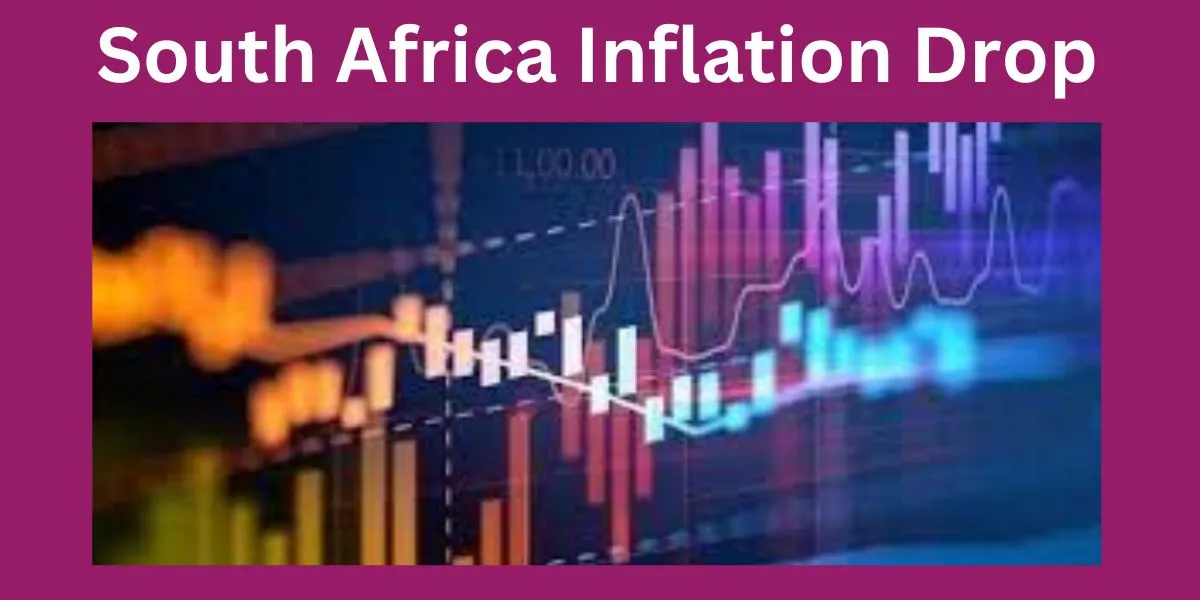The South African economy has been through its fair share of ups and downs, and inflation has always been a critical factor in shaping the country’s economic policies. Recently, there’s been some promising news on the inflation front, with expectations dipping lower. This brings hope to consumers and businesses alike, as it strengthens the case for potential interest rate cuts in the near future. But what does this really mean for the average South African? Let’s dive into the nitty-gritty and see why this dip in inflation expectations might just be the economic break everyone’s been waiting for.
What is Inflation?
Before we get into the details of South Africa’s inflation dip, let’s first cover the basics. Inflation, in simple terms, refers to the increase in the general price level of goods and services over time. It’s the reason why your morning cup of coffee costs more today than it did ten years ago. While some level of inflation is normal in a growing economy, when it spikes too high, it can lead to economic instability.
The Role of Inflation Expectations
Inflation expectations, as the term suggests, are what people – including consumers, businesses, and policymakers – expect inflation to be in the future. These expectations play a huge role in shaping economic policies and decisions, especially when it comes to interest rates. When inflation expectations are high, central banks often raise interest rates to keep inflation in check. Conversely, when inflation expectations dip, it signals that interest rate cuts may be on the horizon.
Why Does Inflation Matter?
Inflation affects everyone – whether you’re a business owner, an investor, or just someone trying to make ends meet. When inflation is high, purchasing power decreases, which means you’re getting less bang for your buck. On the flip side, when inflation is under control, it’s a sign that the economy is stable, and you might even see the cost of borrowing money come down.
South Africa’s Recent Inflation Dip
Now that we’ve got the basics covered, let’s focus on the main story: the recent dip in South Africa’s inflation expectations. In the past few months, economists and financial experts have observed a downward trend in inflation expectations, which has caught the attention of the South African Reserve Bank (SARB). But what exactly is driving this dip?
Key Factors Behind the Dip in Inflation Expectations
Several factors have contributed to the decline in inflation expectations in South Africa. Here are some of the key drivers:
1. Lower Global Commodity Prices
South Africa, like many other countries, has benefited from a decrease in global commodity prices. Lower oil prices, in particular, have helped to ease inflationary pressures by reducing transportation and production costs.
2. Strengthening of the Rand
The South African rand has experienced some strengthening against major currencies. A stronger currency helps lower the cost of imports, which in turn helps to keep inflation down.
3. Reduced Domestic Demand
As a result of ongoing economic challenges, domestic demand for goods and services has decreased. This drop in demand puts less upward pressure on prices, further contributing to the dip in inflation.
4. Government Efforts to Curb Inflation
The South African government and the SARB have implemented various measures to combat inflation. These include monetary policies aimed at stabilizing the economy and controlling price increases.
The Case for a Rate Cut
So, what does this dip in inflation expectations mean for interest rates in South Africa? Well, it strengthens the case for a rate cut. But why exactly is that?
How Inflation and Interest Rates Are Linked
Inflation and interest rates are closely connected. When inflation is high, central banks tend to raise interest rates to cool down the economy and prevent it from overheating. Higher interest rates make borrowing more expensive, which in turn reduces spending and lowers inflation. On the other hand, when inflation is low or declining, central banks may cut interest rates to stimulate economic growth.
Benefits of a Rate Cut
A rate cut could provide much-needed relief to South African consumers and businesses. Here’s how:
1. Lower Borrowing Costs
One of the most immediate effects of a rate cut is lower borrowing costs. This means that loans, including mortgages and personal loans, become more affordable, putting extra money in the pockets of consumers.
2. Boost to Business Investments
For businesses, lower interest rates can encourage investment. When borrowing is cheaper, companies are more likely to take out loans to expand their operations, invest in new technologies, or hire more employees.
3. Economic Growth
A rate cut can also help boost overall economic growth by encouraging spending and investment. When people and businesses have more money to spend, it stimulates demand, which can lead to job creation and increased production.
What Does This Mean for South African Consumers?
If a rate cut does indeed come to pass, it could provide some relief for South African consumers who have been grappling with rising living costs. Lower interest rates mean that loans become more affordable, which can make it easier for people to buy homes, cars, or start businesses. It could also lead to lower credit card interest rates, providing some breathing room for those who are managing debt.
The Potential Downsides
While a rate cut sounds like good news for many, it’s not without its risks. One potential downside is that it could encourage too much borrowing, leading to increased levels of debt. Additionally, if inflation were to pick up again, the central bank might be forced to raise rates quickly to prevent the economy from overheating.
What’s Next for South Africa?
Looking ahead, it will be crucial to keep an eye on inflation trends and how the SARB responds. While the dip in inflation expectations is encouraging, it doesn’t necessarily guarantee that a rate cut will happen. The central bank will need to weigh the potential benefits of lower rates against the risks of increasing debt and inflation down the line.
SARB’s Decision-Making Process
The South African Reserve Bank doesn’t make decisions lightly. Its primary mandate is to maintain price stability and support economic growth. As such, any decision regarding interest rates will be made after careful consideration of various economic indicators, including inflation expectations, economic growth, and global trends.
Conclusion: Is a Rate Cut on the Horizon?
The recent dip in South Africa’s inflation expectations has certainly boosted the case for a rate cut, but nothing is set in stone just yet. The SARB will need to carefully evaluate the economic landscape before making any decisions. For consumers and businesses, however, the prospect of lower interest rates is an encouraging sign. If the SARB does decide to cut rates, it could provide much-needed relief to South Africans struggling with rising costs and slow economic growth.
FAQs
1. What are inflation expectations?
Inflation expectations refer to what people expect inflation to be in the future. These expectations influence economic decisions, such as setting interest rates.
2. Why is the dip in inflation expectations important?
A dip in inflation expectations is significant because it can signal that interest rate cuts might be possible, which could boost economic growth and reduce borrowing costs.
3. How does a rate cut affect consumers?
A rate cut can make loans, mortgages, and other forms of credit cheaper, giving consumers more financial flexibility and potentially boosting spending power.
4. What are the risks of a rate cut?
The primary risk of a rate cut is that it could encourage too much borrowing, leading to increased levels of debt. Additionally, if inflation rises, the central bank might have to raise rates again.
5. When will the South African Reserve Bank decide on a rate cut?
The SARB makes interest rate decisions based on various economic indicators. While the dip in inflation expectations is encouraging, there is no set timeline for a rate cut decision.










